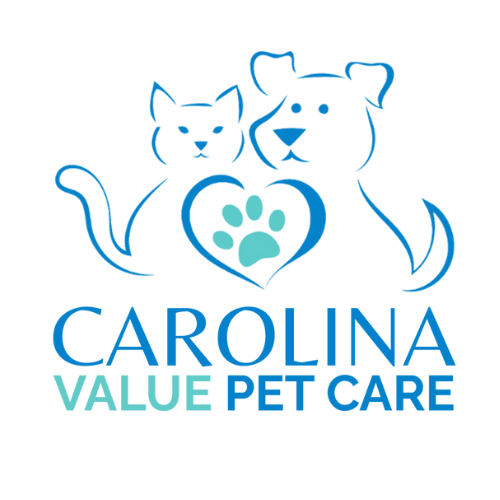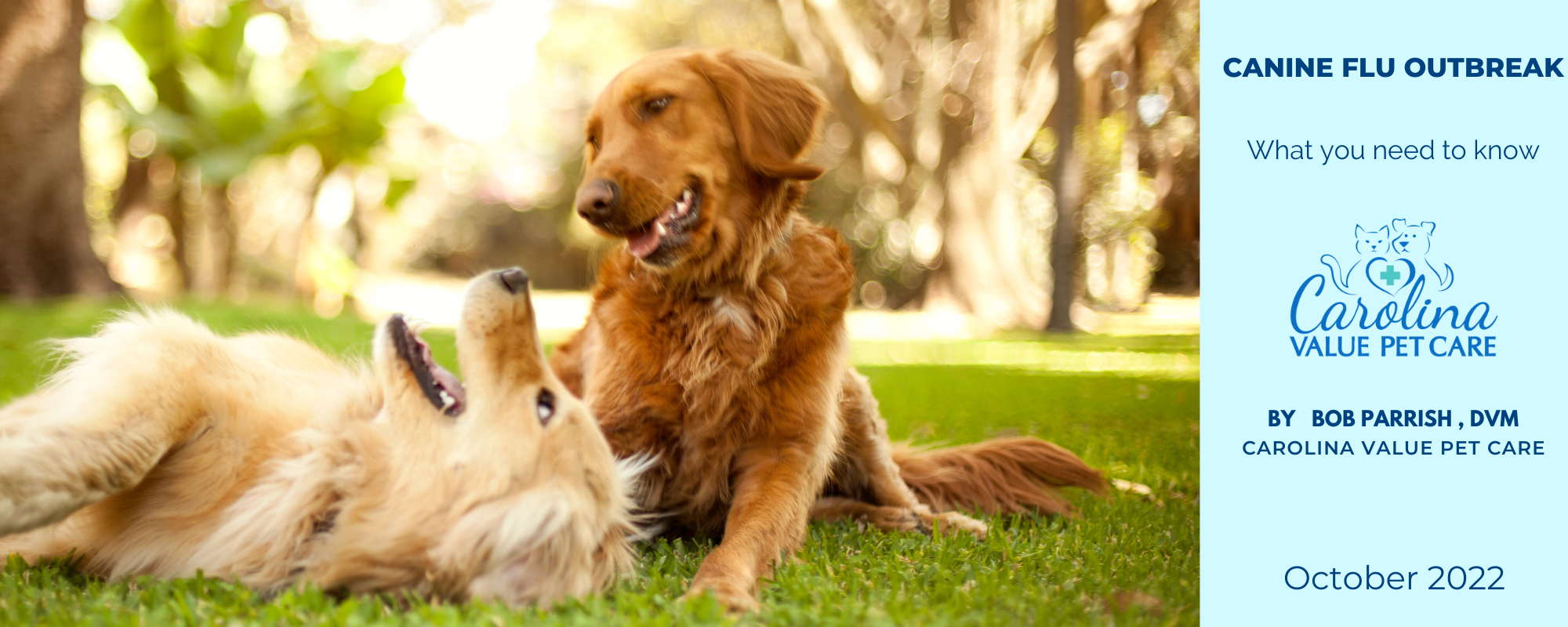https://www.zoetispetcare.com/blog/article/canine-influenzaIn recent weeks, we have received many questions from pet parents regarding Canine Flu/ Influenza due to the publicity surrounding multiple recent outbreaks of this respiratory virus. Because of the potential deadly nature of the Canine Flu, and the fact that it is highly contagious (and can spread not just to other dogs, but to cats as well), I highly recommend that “social dogs”(dogs that go to pet stores, dog parks, doggy daycare, groomers, boarding kennels) be vaccinated against the Canine Flu.
(At Carolina Value Pet Care, we do not see or examine dogs with respiratory infections, nor do we offer treatment for these conditions. Visit your full-service veterinarian for necessary treatment.)
CANINE FLU – WHAT IT IS and WHY IT’S IMPORTANT for YOUR DOG
WHAT IS CANINE FLU: Canine influenza is a highly contagious viral infection that affects dogs (and cats as well, but there is no vaccine approved for cats). There are 2 strains that can cause severe symptoms in dogs: H3N8 and H3N2. The H3N8 virus originated in horses and first appeared in the U.S. in 2004 and has been diagnosed in nearly every state in the U.S. The H3N2 virus originated in Asian bird markets and first appeared in the U.S. in 2015, and has been also been found in most states, including North Carolina and South Carolina.
HOW DOES IT SPREAD: The virus is easily spread from respiratory secretions from coughing, sneezing, barking and licking. Clinical signs typically appear in only 2 to 3 days after being exposed to the virus. Dogs that have been exposed to the virus can spread the disease, even if they are not showing signs of illness. About 80% of dogs that are exposed to the Canine Influenza virus will develop signs of infection. (The other 20% that don’t develop active infection can still spread the virus to other dogs, however.)
HOW LONG CAN THE VIRUS SURVIVE in the ENVIRONMENT: The virus can survive for up to 48 hours on surfaces (such as food and water bowls), 24 hours on clothing, and 12 hours on hands where no hygiene/handwashing is practiced.
WHERE IS THE GREATEST RISK OF INFECTION: As with so many viruses in people, Canine Flu is at greatest risk for “social” pets, those dogs that go to pet stores, boarding kennels or daycare facilities, groomers, and dog parks. Animal shelters are perhaps the most serious threat as highly stressed lost and homeless dogs are placed with other dogs where there is virtually no knowledge of the health or vaccine status of the dogs.
WHAT ARE THE SYMPTOMS IN DOGS: The severity of the symptoms of dogs infected with Canine Influenza will vary from dog to dog … just as with colds and flu in people. However, runny nose and eyes … sneezing … loss of appetite … fever … lethargy/sluggishness… and coughing are typically seen. The cough can appear as either soft and “moist” ... or dry and harsh. In many cases, a persistent cough will continue for up to 3 weeks in spite of treatment and cough suppressants. And, unfortunately, Canine Influenza has been fatal in many dogs.
WHAT ARE THE SYMPTOMS IN CATS: When cats are infected with Canine Influenza, they will usually have a nasal discharge … congestion ... excessive salivation … and lethargy.
HOW IS IT DIAGNOSED: Confirming the cause of a dog with an upper respiratory infection isn’t that easy. Several different viruses and bacteria can be responsible for a coughing dog. To confirm if a dog has Canine Influenza, a PCR test is the best choice (by getting a nasal swab) but should be taken within 4 days of the symptoms showing.
HOW IS IT TREATED: Since there is no single drug that will cure Canine Influenza, we have to treat the symptoms and provide supportive therapy for the sick pet. First, infected pets must be isolated so that the virus doesn’t spread to other dogs and cats. Fluid therapy is critical to make sure the pets stay well-hydrated. Since many infected pets have a poor appetite, we find ways to provide good nutrition to help battle the virus. We often use anti-inflammatory medications to reduce fever. Antibiotics will not treat a virus, but we often use them to prevent ‘secondary’ bacterial infections that may lead to pneumonia. Cough suppressants don’t always help, but are frequently used. In severe cases, oxygen therapy is often necessary.
HOW IS CANINE INFLUENZA PREVENTED: A combination of good sanitation and vaccination against the Canine Influenza are the best means of prevention. A dilute bleach solution (1 part bleach to 30 parts of water) can effectively disinfect items such as tables, food and water bowls, leashes, crates, kennels, floors, etc. Since bleach breaks down easily when mixed with water (and becomes ineffective), a new batch needs to be made daily. It’s best to use stainless steel bowls since plastic ones are difficult to disinfect once they are scratched. And hand sanitation is important for individuals handling pets.
OUR VACCINE: The vaccine that we use provides protection against both the H3N2 and the H3N8 strains of Canine Flu. For adequate protection, 2 vaccines are given 2 to 4 weeks apart, then an annual booster. Once the 2nd vaccine is given, it can take up to 7-14 days before effective protection is provided for the dog.
It is important to understand that even if your dog is vaccinated against Canine Influenza if they are exposed to the virus, they may still show signs of infection. However, the vaccine will greatly reduce the severity and duration of illness.
Canine Influenza vaccines are approved for use in dogs only … not in cats.
WHAT ABOUT CONTAGION TO PEOPLE: There is no evidence that Canine Influenza can be spread to people.

